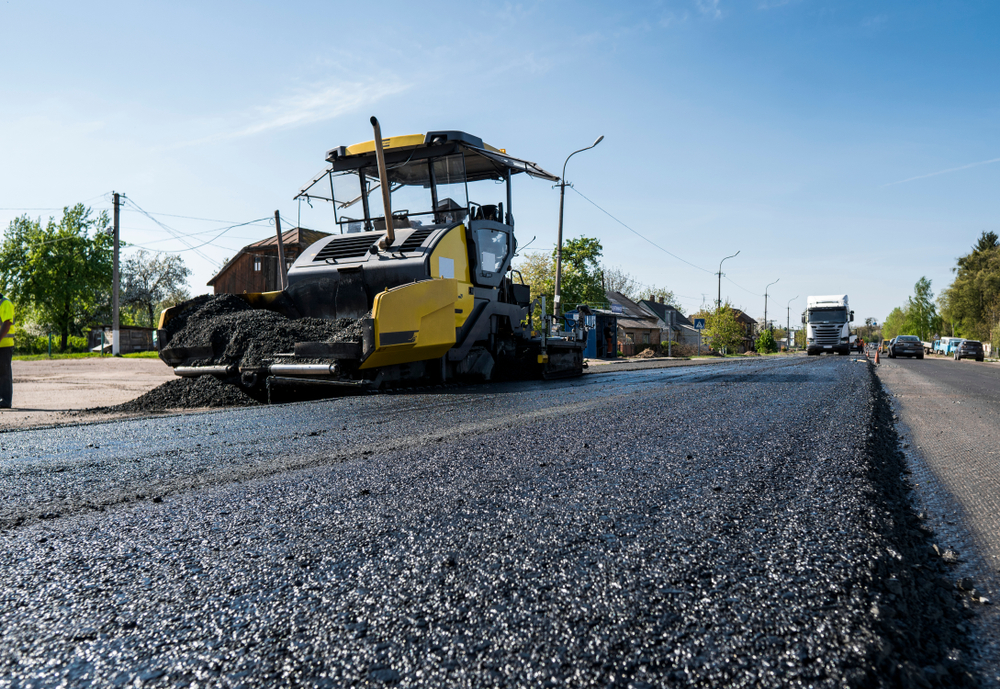
Comparing Asphalt and Concrete Pavements: Pros, Cons, and Considerations
When it comes to constructing roads, driveways, and other surfaces, choosing between asphalt and concrete can be a challenging decision. Both materials have unique attributes that make them suitable for different applications. Understanding the differences, advantages, and drawbacks of each can help you make an informed decision. In this blog, we delve into the key aspects of asphalt and concrete pavements, exploring their pros, cons, and considerations to help you decide which is best for your needs.
Material Composition and Application
The primary difference between asphalt and concrete pavements lies in their composition. Asphalt is made from a mixture of aggregates, binders, and fillers, with bitumen serving as the binding agent. Concrete, on the other hand, is a combination of cement, water, aggregates, and sometimes supplementary materials like fly ash or slag.
Asphalt is known for its flexibility, making it ideal for applications requiring smooth and quiet surfaces, such as highways and urban roads. Its malleable nature allows it to expand and contract with temperature fluctuations, reducing the likelihood of cracking. Conversely, concrete’s rigid composition lends itself to projects requiring durability and strength, such as airport runways, heavy industrial pavements, and large parking lots. This distinction in application highlights why a pavement comparison often revolves around the intended use and environmental factors.
Durability and Longevity
Durability is one of the critical factors in deciding between asphalt and concrete. Asphalt pavements typically have a lifespan of 15 to 20 years, depending on maintenance and environmental conditions. Proper upkeep, such as sealcoating and crack repairs, can extend its longevity. However, over time, asphalt may require resurfacing or milling to maintain its functionality.
Concrete pavements, on the other hand, boast a significantly longer lifespan, often lasting 30 to 50 years with minimal maintenance. This longevity comes from its rigid structure and resistance to deformation under heavy loads. While concrete may develop surface cracks over time, these can often be addressed through joint filling or other repairs. Despite its long lifespan, concrete’s initial cost and susceptibility to certain weather conditions may influence your choice.
Cost Considerations
Cost is a deciding factor for many projects, and this is where asphalt and concrete show stark differences. Asphalt pavement costs are generally lower upfront, making it a more affordable option for many homeowners and municipalities. The installation process for asphalt is also quicker, reducing labor and equipment costs. However, asphalt requires regular maintenance, such as sealing and resurfacing, which can add to its lifetime expenses.
Concrete pavements have a higher initial cost due to material and labor expenses. The process of laying concrete is more complex and time-intensive, requiring proper curing to achieve desired strength. Despite these upfront costs, the lower maintenance requirements of concrete can offset its higher price over time, making it a cost-effective solution for long-term projects. When weighing the asphalt pavement cost against concrete, it’s essential to consider both immediate expenses and lifecycle costs.
Environmental Impact and Sustainability
In today’s eco-conscious landscape, the environmental impact of building materials plays a significant role in decision-making. Asphalt is often considered less environmentally friendly because it relies on petroleum products for its production. However, advancements in technology have led to the development of recycled asphalt, which uses reclaimed materials to reduce waste and conserve resources.
Concrete also has environmental challenges, primarily due to its production process. Cement, a key component of concrete, generates significant CO2 emissions during manufacturing. On the positive side, concrete’s durability and reflective properties can mitigate urban heat island effects and reduce energy consumption for lighting. Furthermore, innovations in eco-friendly concrete mixes, such as incorporating recycled aggregates or alternative binders, are making concrete a more sustainable option.
When considering the sustainability of asphalt vs concrete, it’s vital to evaluate not only the materials but also their long-term environmental implications and the potential for recycling.
Maintenance and Aesthetic Appeal
The maintenance requirements of asphalt and concrete significantly differ, influencing their suitability for various projects. Asphalt’s dark surface absorbs heat, leading to faster snow and ice melting in colder climates. However, it is prone to wear and tear, requiring periodic resealing and repairs to address cracks and potholes. The maintenance frequency depends on traffic volume and environmental conditions but typically occurs every 3 to 5 years.
Concrete’s maintenance is less intensive. Its light-colored surface reflects heat, making it ideal for warmer regions. Concrete can withstand heavy loads and resist damage from freeze-thaw cycles better than asphalt. However, repairs can be more challenging and costly when damage does occur. For instance, replacing a section of concrete pavement is often more labor-intensive than patching asphalt.
Aesthetically, concrete offers more versatility with its ability to be stamped, stained, or colored to match design preferences. This makes it a popular choice for decorative applications like patios and sidewalks. Asphalt, while less versatile, provides a clean and uniform appearance that blends well with most surroundings, making it a preferred option for driveways and roads. The decision in a pavement comparison often hinges on balancing functionality with visual appeal.
Conclusion
Choosing between asphalt and concrete pavements involves weighing various factors, including cost, durability, environmental impact, and maintenance needs. Asphalt offers a cost-effective and flexible solution for projects requiring quick installation and smooth surfaces, though it demands regular upkeep. Concrete provides unparalleled durability and aesthetic versatility but comes with a higher upfront cost and longer installation times.
Ultimately, the best choice depends on your project’s specific requirements, budget, and environmental considerations. By understanding the pros and cons of asphalt and concrete, you can make an informed decision that aligns with your long-term goals.
Need Engineers and Designers in Hudson, CO?
Since 2006, High Plains Engineering & Consulting, LLC has been a civil and structural engineering company in Fort Lupton and the surrounding areas. We provide sensible solutions to geotechnical, structural, environmental, and civil engineering challenges. Our office provides practical expertise backed by diverse design resources to get the job done cost-effectively and efficiently with sustainability in mind. We offer various services for commercial, residential, and agricultural properties like soil testing, percolation testing, and foundation and septic design for new construction. Once that is taken care of we also offer services for floor framing, garage plans, house plans, site plans, and inspection services. Call us today for an appointment!
Categorised in: Pavements

 HPEC is an active member of CAGE
HPEC is an active member of CAGE